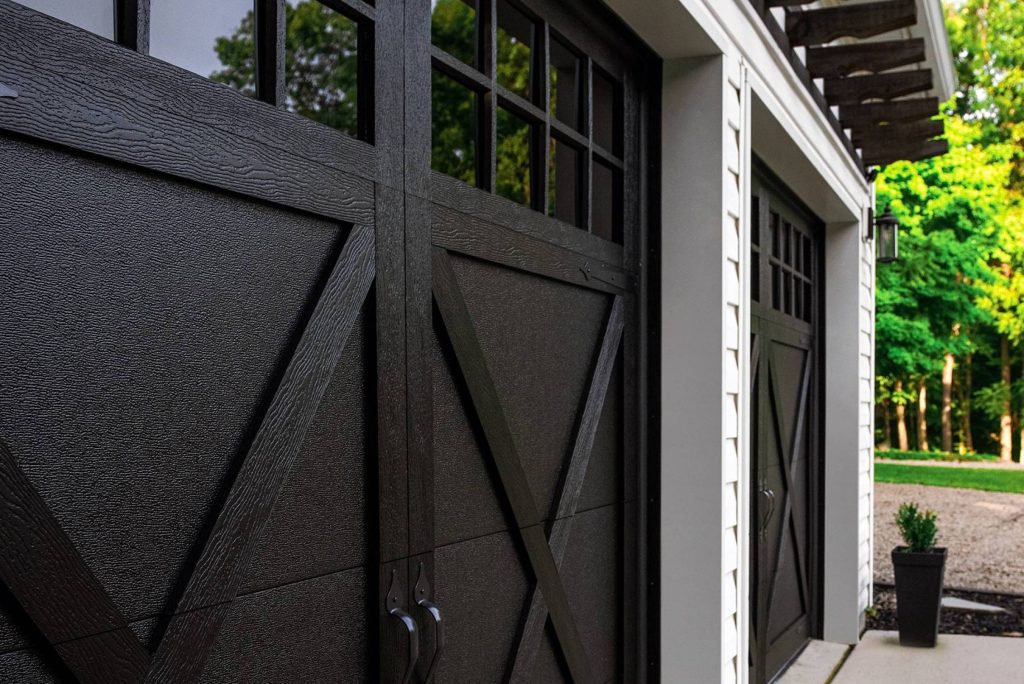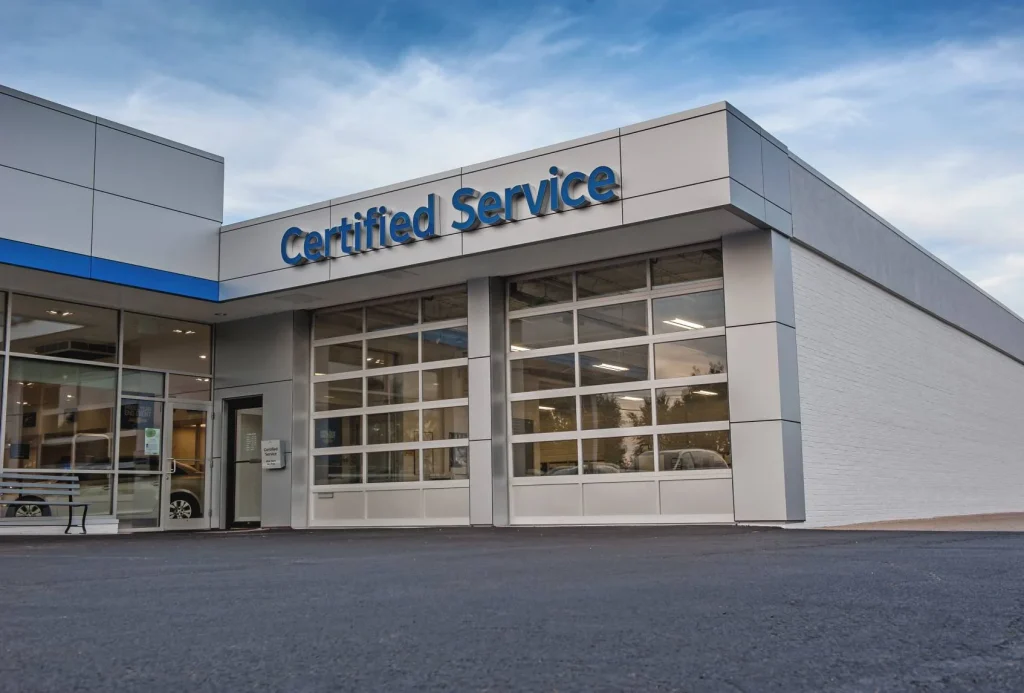Garage Door Spring Installation in Wyandotte, MI
Precision Installation for Maximum Durability
Locally Owned & Operated Since 2017
Schedule A Service Request
We Serve Businesses In And Around The Following Cities:
About Garage Door Spring Installations
Garage Door Spring Installation in Wyandotte Michigan
In the picturesque city of Wyandotte, Michigan, where residential charm meets thriving commercial activity, the importance of a properly functioning garage door cannot be understated. Whether in the heart of downtown or in the quiet suburbs, overhead garage doors serve as both entryways to homes and gateways to businesses. The key to their smooth operation often lies in a small yet crucial component: the garage door spring. Integral to both security and functionality, a robust garage door spring system ensures that residents and business owners alike can rely on their overhead doors day after day.
Among the many providers ensuring that these systems run seamlessly is McClellan Overhead Door. Renowned for their expertise and professionalism, they offer comprehensive garage door spring installation services that are second to none. This article delves into the intricacies of garage door spring installation, exploring the process, benefits, and real-world applications to help you understand why this service is pivotal, particularly in the context of both residential and commercial properties in Wyandotte, Michigan.
The Essential Role of Garage Door Springs
Garage door springs are the unsung heroes of your garage system. They bear the weight of the door as it moves up and down, facilitating smooth, efficient operation. Without these springs, the burden of lifting the door would shift to the garage door opener, leading to premature wear and potential failure.
Two primary types of springs exist: torsion springs and extension springs. Torsion springs are located above the door, wound tightly to offer more controlled movement and increased safety. Extension springs, on the other hand, are positioned alongside the door tracks, stretching and contracting to help lift and lower the door. Both have their unique advantages, and understanding their differences can help homeowners and business operators make informed decisions regarding their garage door systems.
The Garage Door Spring Installation Process
Installing garage door springs is not a task for the faint-hearted. It requires precision, expertise, and an understanding of mechanical systems. The process begins with selecting the right type of spring, factoring in door size, weight, and usage frequency. This is an area where McClellan Overhead Door shines, offering personalized consultations to ensure a perfect match for your specific needs in Wyandotte.
Once the appropriate spring type is chosen, skilled technicians meticulously handle the installation. This involves removing the old springs (if applicable), installing the new ones, and adjusting them to balance the door correctly. This adjustment is critical because an improperly balanced door can lead to excessive wear and tear on the opener, shorten the lifespan of the door, and in severe cases, become a safety hazard.
The process is complex and requires specialized tools and knowledge. For this reason, many residents and businesses in Wyandotte opt to rely on the professionals at McClellan Overhead Door to handle their garage door spring installation, ensuring both the safety and efficiency of their garage systems.
The Cost of Garage Door Spring Installation
The cost associated with garage door spring installation can vary widely, influenced by factors such as the type of springs needed, the size and weight of the door, and specific service needs. In Wyandotte, Michigan, McClellan Overhead Door provides competitive pricing while emphasizing value and quality. They offer transparent estimates, allowing customers to understand the costs upfront without hidden surprises.
While it may be tempting to opt for the lowest bid or attempt a DIY solution, it is essential to recognize that improperly installed springs can lead to increased costs down the road due to potential damage or accidents. Investing in professional installation ensures that the job is done right the first time, providing peace of mind and long-term savings.
The Benefits of Professional Installation
Choosing professional garage door spring installation offers numerous benefits beyond the obvious assurance of a smoothly operating door. First and foremost is safety. Garage door springs operate under high tension, and mishandling them can lead to significant injury. Professional technicians are trained to manage these risks effectively, ensuring the safety of both the installer and the customer.
Additionally, a professional installation usually comes with a warranty, providing further protection and peace of mind. The expertise of a seasoned technician means that they also perform a comprehensive system check, identifying potential issues before they become costly problems. This preventive maintenance approach ensures the longevity and performance of the entire garage door system.
In the bustling business landscape of Wyandotte, where garage doors are an integral part of day-to-day operations, these benefits are invaluable. Businesses cannot afford downtime, and a reliable garage door can mean the difference between smooth operations and costly delays.
Real-World Applications in Wyandotte
From residential homes to commercial establishments, garage door spring installation plays a critical role in the daily lives of Wyandotte's residents. In residential settings, a garage often serves as the primary entrance to a home. Its reliable operation is key to both security and convenience. McClellan Overhead Door has been a stalwart in ensuring that homeowners enjoy uninterrupted access and safety.
For businesses, the stakes are even higher. Many local businesses, from automotive shops to retail outlets, rely on overhead doors for deliveries, customer access, and security. An unexpected malfunction can halt business operations, leading to lost revenue and customer dissatisfaction. By partnering with McClellan Overhead Door, businesses can minimize these risks, knowing that their garage door systems are in expert hands.
The Importance of Timely Spring Adjustment
Even with professional installation, garage door springs require periodic adjustment to maintain their efficiency. Over time, springs can lose tension or become misaligned due to regular use and temperature fluctuations typical of Michigan's climate. Regular spring adjustments can prevent undue stress on the door opener and other components, extending the lifespan of the entire system.
In Wyandotte, McClellan Overhead Door provides ongoing maintenance services, including timely spring adjustments. This proactive approach helps customers avoid unexpected breakdowns, ensuring their doors operate smoothly year-round. By scheduling routine maintenance, homeowners and businesses alike can protect their investments and enjoy hassle-free garage door operation.
Choosing the Right Partner for Your Needs
As with any crucial service, selecting the right partner for garage door spring installation is paramount. McClellan Overhead Door has built a reputation in Wyandotte for their unmatched expertise, reliability, and customer-focused approach. Their in-depth knowledge of both residential and commercial garage door systems makes them an ideal choice for any spring installation project.
Whether it's through a personalized consultation or the provision of emergency repair services, they demonstrate a commitment to exceeding customer expectations. For anyone seeking assurance and expert service, McClellan Overhead Door stands out as the go-to provider in the region. Their dedication to quality and performance guarantees that your garage door system will remain a reliable asset to your property.
Looking Toward the Future
As technology continues to advance, so do the capabilities of garage door systems. The future may hold innovations such as smart springs and integrated safety features, but fundamental to any system will be the competence of the installers. In Wyandotte, businesses like McClellan Overhead Door position themselves as pioneers by staying at the forefront of these advancements, ready to incorporate new technologies into their offerings.
For the citizens of Wyandotte, this means continued access to state-of-the-art solutions in garage door functionality and security. By choosing a local expert, you're not only getting a quality product but also supporting a business invested in the community's safety and innovation. In today's fast-paced world, ensuring the integrity of your garage door system is an investment in both security and peace of mind.
In summary, the significance of a reliable garage door spring cannot be overstated, particularly within the dynamic environment of Wyandotte, Michigan. Whether for home or business, trust McClellan Overhead Door to deliver unparalleled service, ensuring your garage systems are both safe and efficient. The journey towards flawless garage door operation begins with the right spring installation and the right partner by your side. Embracing this approach not only safeguards your property but also elevates your everyday experience, paving the way for a seamless daily routine. Remember, the next time your garage door springs into action, it's powered by precision and professionalism, courtesy of McClellan Overhead Door.
Garage Door Spring Installations Gallery



Call Us Today to receive your Free Quote for Garage Door Spring Installation in Wyandotte
Serving: Wyandotte, Michigan

About Wyandotte, Michigan
In the 18th century, this area was a small village of the Wyandot (or Wendat) called Maquaqua. Local French colonists called it Monguagon, a transliteration of its pronunciation in French.
The Wyandot were Iroquoian-speaking and part of the Huron nation from the Georgian Bay area of Canada. They generally lived peacefully with the few white French farmers, exchanging products and favors.
During the French and Indian War (part of the Seven Years' War in Europe), the Wyandot were allied with the Potawatomi and the French. English had taken control of the garrisoned Fort of Detroit. Near here, Chief Pontiac plotted his attack against the British fort in 1763 but failed.
The center of the village was nearly parallel to Biddle Avenue between Oak Street and Eureka Road near the river and its sandy beach, which was a welcome feature to the local tribesmen, as their main mode of transportation to the fort in Detroit was by birch bark canoe. The tribe was considered peaceable and friendly with the British, the remaining French in the area, and the newly arrived Americans.
In 1818, after the United States had gained independence and then control over this area from the British, the Wyandot signed a treaty with the U.S. government ceding this land. Some Wyandot moved to an area near Flat Rock, Michigan, then to Ohio, and Indian Territory, in Kansas and finally Oklahoma.
Most of the Wyandot moved across the Detroit River to Canada and what is now Anderdon, Windsor, Ontario. Many of their descendants live there today. The name somewhat lives on as Wyandotte County, Kansas.
The Anglo-Americans later credited Major John Biddle as the first white settler in Wyandotte, but French colonists had lived in the area for more than a century before he settled there.
After the War of 1812 and the Wyandot cession, Major Biddle purchased 2,200 acres (9 km) of land from the federal government in 1818. He developed a farm and a summer estate. The buildings were completed around 1835, and he named his estate "Wyandotte" after the Indians who were still living in the area.
John S. Van Alstyne, general manager for Eber Ward of both the Eureka Iron & Steel Works and the associated Wyandotte Rolling Mills, laid out the master plan for the city. This plan was frequently called the "Philadelphia Plan", as streets were laid out on a north–south and east–west grid, similar to those in Philadelphia, Pennsylvania. That plan was made by colonial founder William Penn.
In Wyandotte, the focal point was the Detroit River, and the first street parallel became Front Street. This street was eventually extended and renamed Van Alstyne Boulevard in 1921. Streets running parallel to Front Street were named according to numbers, from First to the extent of the territory involved. Streets running horizontal to the numbered streets were named for trees and plants.
Founded as a village of Ecorse Township in 1854, Wyandotte was incorporated as a city, and granted a charter by the State of Michigan, on December 12, 1866. It held its first city election in April 1867, making it the oldest incorporated city in Wayne County after Detroit. On April 8, 1867, the Village of Wyandotte was incorporated as a home rule city.
A community named New Jerusalem, consisting of immigrants from multiple nations, was founded nearby in the 1890s. It has since been absorbed by Wyandotte. It was incorporated as a village with the name of Glenwood in 1900. In 1901 a post office was established here with the name of Bacon since there was already a Glenwood post office in Wayne Township, Cass County, Michigan. Wyandotte annexed the community in 1905.
The community of Ford City was founded as a village in 1902. It was named for John B. Ford who ran the Michigan Alkali Company there. In 1922 it merged with Wyandotte. On April 14, 1924, Wyandotte annexed a large section of Ecorse Township.
Since settlement by eastern Americans, Wyandotte has been influenced by immigrants from many nations. Ethnic German, Polish, Irish and Italian communities have contributed much from their cultures. The city attracted African Americans for industrial jobs, but had a discriminatory past as a sundown town. It refused to allow them as residents.
According to the United States Census Bureau, the city has a total area of 7.01 square miles (18.16 km), of which 5.27 square miles (13.65 km) is land and 1.74 square miles (4.51 km) is water.
The city is 10 miles (16 km) southwest of Downtown Detroit. The Detroit River forms the eastern boundary of the city, and the uninhabited Grassy Island is administered by the city. The Ecorse River also forms a small northern boundary of the city.
| Census | Pop. | Note | %± |
|---|---|---|---|
| 1870 | 2,731 | — | |
| 1880 | 3,631 | 33.0% | |
| 1890 | 3,817 | 5.1% | |
| 1900 | 5,183 | 35.8% | |
| 1910 | 8,287 | 59.9% | |
| 1920 | 13,851 | 67.1% | |
| 1930 | 28,368 | 104.8% | |
| 1940 | 30,618 | 7.9% | |
| 1950 | 36,846 | 20.3% | |
| 1960 | 43,519 | 18.1% | |
| 1970 | 41,061 | −5.6% | |
| 1980 | 34,006 | −17.2% | |
| 1990 | 30,938 | −9.0% | |
| 2000 | 28,006 | −9.5% | |
| 2010 | 25,883 | −7.6% | |
| 2020 | 25,058 | −3.2% | |
| U.S. Decennial Census | |||
As of the census of 2010, there were 25,883 people, 10,991 households, and 6,727 families residing in the city. The population density was 4,911.4 inhabitants per square mile (1,896.3/km). There were 12,081 housing units at an average density of 2,292.4 per square mile (885.1/km). The racial makeup of the city was 94.7% White, 1.3% African American, 0.7% Native American, 0.5% Asian, 0.9% from other races, and 1.9% from two or more races. Hispanic or Latino of any race were 5.1% of the population.
There were 10,991 households, of which 28.4% had children under the age of 18 living with them, 42.6% were married couples living together, 13.2% had a female householder with no husband present, 5.4% had a male householder with no wife present, and 38.8% were non-families. 33.0% of all households were made up of individuals, and 12.8% had someone living alone who was 65 years of age or older. The average household size was 2.35 and the average family size was 2.99.
The median age in the city was 40.4 years. 21.4% of residents were under the age of 18; 8.5% were between the ages of 18 and 24; 26.4% were from 25 to 44; 29.9% were from 45 to 64; and 13.8% were 65 years of age or older. The gender makeup of the city was 48.9% male and 51.1% female.
As of the census of 2000, there were 28,006 people, 11,816 households, and 7,420 families residing in the city. The population density was 5,278.1 inhabitants per square mile (2,037.9/km). There were 12,303 housing units at an average density of 2,318.7 per square mile (895.3/km). The racial makeup of the city was 96.32% White, 0.52% African American, 0.49% Native American, 0.33% Asian, 0.03% Pacific Islander, 0.72% from other races, and 1.59% from two or more races. Hispanic or Latino of any race were 2.91% of the population.
There were 11,816 households, out of which 27.7% had children under the age of 18 living with them, 46.3% were married couples living together, 11.9% had a female householder with no husband present, and 37.2% were non-families. 31.9% of all households were made up of individuals, and 13.3% had someone living alone who was 65 years of age or older. The average household size was 2.36 and the average family size was 2.99.
In the city, the population was spread out, with 22.6% under the age of 18, 8.3% from 18 to 24, 31.6% from 25 to 44, 21.7% from 45 to 64, and 15.7% who were 65 years of age or older. The median age was 38 years. For every 100 females, there were 96.0 males. For every 100 females age 18 and over, there were 93.5 males.
As of 2000, residents were predominantly of Polish descent, with the following ancestry distribution: Polish (22.5%), German (21.9%), Irish (17.5%), English (9.0%), French (8.5%), Italian (8.4%).
The median income for a household in the city was $43,740, and the median income for a family was $54,106. Males had a median income of $42,469 versus $27,261 for females. The per capita income for the city was $22,185. About 4.7% of families and 6.2% of the population were below the poverty line, including 8.7% of those under age 18 and 4.0% of those age 65 or over.
Wyandotte Public Schools operates the city's public schools. Since 1901, all schools are named for former US presidents.
- Elementary and middle schools include:
- Garfield Elementary School, built in 1932
- James Monroe Elementary School, built in 1954
- George Washington Elementary School, built in the 1930s
- Thomas Jefferson Elementary School, built in 1950
- Middle schools include:
- Woodrow Wilson Middle School, built in 1956
Wyandotte's public high school is Theodore Roosevelt High School, which began construction in 1921, was completed in 1923, and has since been expanded four times.
Currently there are no Catholic schools open in Wyandotte. These are the schools that were formerly open: Our Lady of Mount Carmel Elementary and High School, St. Stanislaus Kostka Elementary School, St. Patrick Elementary and High School, St, Elizabeth Elementary School, St. Joseph Elementary School, and St. Helena Elementary School; also, Wyandotte Catholic Consolidated School (After the consolidation of Sts. Elizabeth, Patrick, and Joseph) were previously in the community. They were a part of the Roman Catholic Archdiocese of Detroit.
Wyandotte Consolidated formed in 1970 from the merger of St. Elizabeth, St. Joseph, and St. Patrick Schools. It closed in 2011 after a downturn in the economy.
